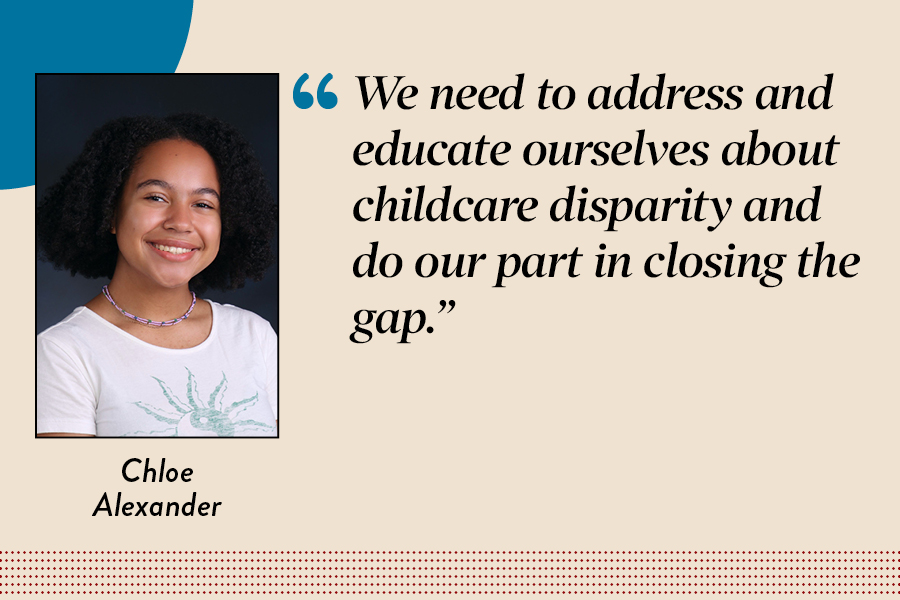Closing the gap within childcare disparity requires education and advocacy
Midway Staff
Low-income communities and low rates of maternal labor participation correlate with child care deserts, while COVID-19 and underfunding further the disparity.
February 2, 2023
As a private school, Lab offers after school childcare programs for young students. This type of access isn’t available for other people, even just blocks away from Lab. Children and parents alike are in need of childcare services like the one Lab provides. In all of Chicago’s 2.697 million people, about 25% of children ages 5 and below are impoverished. Five out of six children living in Chicago under the age of 5 live in a childcare desert — an area in which residents scarcely have access to childcare resources and centers.
In order to build an understanding, as stated in the Lab Mission Statement, we need to address and educate ourselves about childcare disparity and do our part in closing the gap. Low-income communities and low rates of maternal labor participation correlate with childcare deserts, while COVID-19 and underfunding further the disparity.
With a lack of childcare access, parents have a harder time re-entering the labor force. Women in particular are often forced to stay at home and care for their children. Although for the past few years around 17.9% of the American workforce has been working remotely — according to the U.S. Census Bureau — different jobs and companies have been requiring their workers to come back in person, nearly 50% according to CNBC. Women find themselves staying at home even after required remote-working ended due to high costs of childcare and childcare deserts. Since childcare deserts usually occur in low-income areas, the women who are in need of work are forced to stay at home and care for their children, causing the family income to be brought in by only one parent. This creates a cycle of disparity in childcare which will only be stopped if a total reset is done. In a 2020 study, CAP found that low and middle-income communities have the lowest levels of childcare relative to estimated demand. Conversely, high-income communities had the most childcare availability.
An impact of COVID-19 on Child Care study by the University of Chicago and Illinois Action for Children found that because of the COVID-19 pandemic, few childcare programs kept their doors open, while the majority closed during 2020. Although they were allowed to reopen for the children of essential workers in limited numbers, they weren’t allowed to provide services for other children. The limited space wasn’t the only issue for these centers. Because most people were working from home, they didn’t need childcare which caused centers to lose the little money that they get.
According to the Guardian, the United States spends about $500 per child annually while the yearly average for wealthy countries is $14,436. Because of the lack of government funding and subsidizing, childcare workers make about $12 per hour. Low pay leads to staffing shortages often found in childcare centers, contributing to another cycle of disparities.
As a private school with these services to employees, we need to recognize that there’s something that we can do. The Build Back Better Act which would have provided universal preschool for all three and four year olds and affordable high quality childcare for families to no more than 7% of income and for families earning up to 250% of state median income for six years. Supporting legislation like this allows for the disparity to be addressed and eventually fixed. Volunteering at childcare centers and raising awareness for said centers would also help the providers.




























































